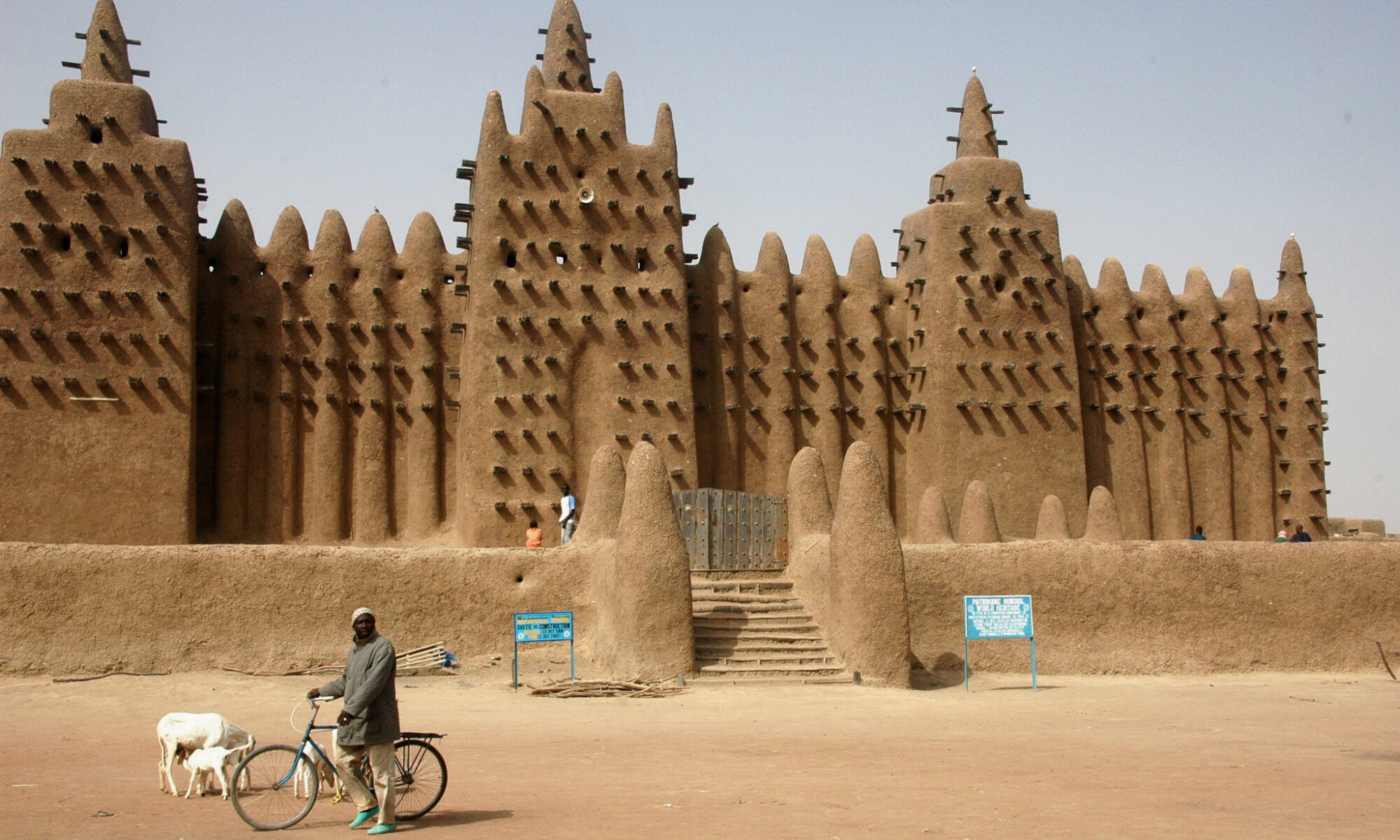Earthen architecture, the world’s oldest and most widespread existing type of building, has been used in some of the world’s simplest shelters and most impressive monuments, such as the Great Wall of China, the missions of the American Southwest, and the city of Timbuktu. Nearly one half of the world’s population—about three billion people on six continents—lives or works in buildings constructed of earth.
Grand or humble, earthen structures are threatened by encroaching development and changes in the environment – including the introduction of modern building materials and an exodus of residents from traditional villages and towns into large cities – as well as by natural disasters such as earthquakes and flooding. Not only are the buildings disappearing at an alarming rate, so is the traditional knowledge of how to build and conserve these important structures.
Significantly, roughly 20 percent of the architecture on the World Heritage List today is constructed of earth, but the public is largely unaware of these historic treasures.
The 10th International Conference on the Study and Conservation of Earthen Architectural Heritage, titled Terra 2008, is organized by the Getty Conservation Institute (GCI). It will bring together more than 300 international experts from the fields of conservation, anthropology, architecture and engineering, scientific research, site management and sustainable development of earthen architectural heritage to assess the state of earthen architecture worldwide and the latest scientific research in this field.
Terra 2008 will be held February 1–5, 2008, in Bamako, Mali, at the Centre International de Conferences de Bamako, a modern facility located in the city center.The conference is co-sponsored by the Ministry of Culture of Mali and will be held in French and English.
“Traditionally, earthen architecture has received less attention in the conservation field than structures made from more robust materials. Ironically, in most places in the world, earth is the conventional building material,” said Tim Whalen, director of the Getty Conservation Institute. “For more than 20 years, the GCI has advanced thinking and practice in the conservation of earthen architecture. The beauty and vulnerability of these structures demands our attention.”
Whalen further added, “The Getty Conservation Institute is delighted to work with the Ministry of Culture of Mali to host the Terra 2008 conference.”
Mali’s earthen buildings are renowned worldwide for their aesthetic beauty and diversity—architecture that brings with it major preservation challenges. The conference provides a unique opportunity to discuss these problems in situ in sub-Saharan Africa, and is the first time the earthen architecture professional community has met in Africa.
In conjunction with the conference, public programming also will be offered, highlighting the beauty and significance of earthen architecture in Mali and around the world. Outreach activities will include exhibitions at the National Museum of Mali and at the Memorial Modiba Keita, film screenings, and live construction demonstrations by Mali’s celebrated masons.
This is the 10th conference to be organized by the earthen architecture community since 1972. Terra 2008 is organized by the GCI and the Ministry of Culture of Mali, in collaboration with Africa 2009, the Centre International de la Construction en Terre- Ecole Nationale Supérieure d’Architecture de Grenoble (CRATerre – ENSAG), International Council on Monuments and Sites South Africa (ICOMOS South Africa), International Centre for the Study of the Preservation and Restoration of Cultural Property (lCCROM), and the World Heritage Centre, under the aegis of the International Scientific Committee for Earthen Architectural Heritage of the International Council on Monuments and Sites (ICOMOS). Numerous international organizations will also facilitate the participation of specialists from all regions of Africa as well as Latin America, Asia, and the Middle East.
For more information on the conference, visit: http://www.getty.edu/conservation/field_projects/terra/mali_conference.html
